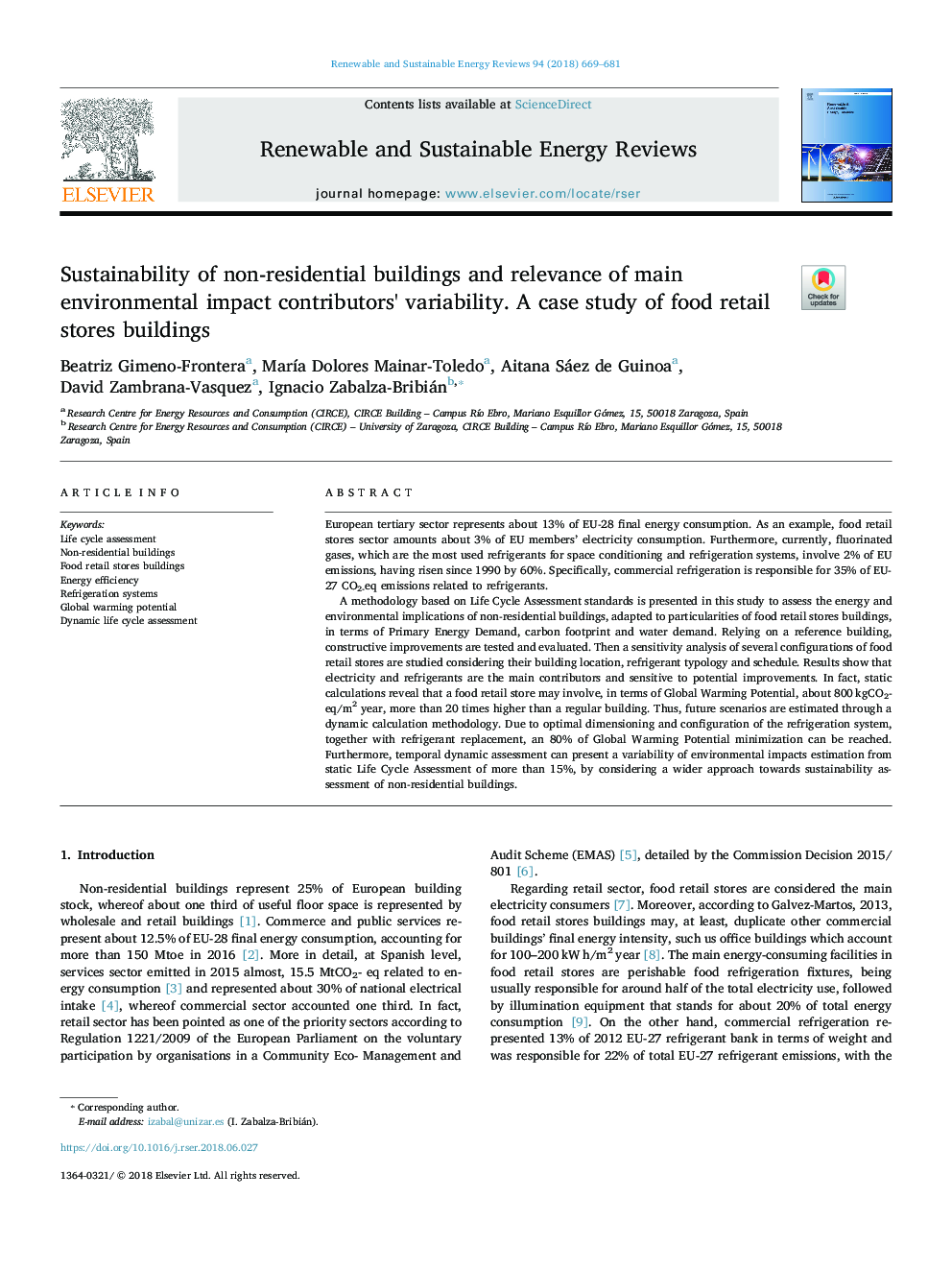| Article ID | Journal | Published Year | Pages | File Type |
|---|---|---|---|---|
| 8110499 | Renewable and Sustainable Energy Reviews | 2018 | 13 Pages |
Abstract
A methodology based on Life Cycle Assessment standards is presented in this study to assess the energy and environmental implications of non-residential buildings, adapted to particularities of food retail stores buildings, in terms of Primary Energy Demand, carbon footprint and water demand. Relying on a reference building, constructive improvements are tested and evaluated. Then a sensitivity analysis of several configurations of food retail stores are studied considering their building location, refrigerant typology and schedule. Results show that electricity and refrigerants are the main contributors and sensitive to potential improvements. In fact, static calculations reveal that a food retail store may involve, in terms of Global Warming Potential, about 800â¯kgCO2- eq/m2 year, more than 20 times higher than a regular building. Thus, future scenarios are estimated through a dynamic calculation methodology. Due to optimal dimensioning and configuration of the refrigeration system, together with refrigerant replacement, an 80% of Global Warming Potential minimization can be reached. Furthermore, temporal dynamic assessment can present a variability of environmental impacts estimation from static Life Cycle Assessment of more than 15%, by considering a wider approach towards sustainability assessment of non-residential buildings.
Keywords
Related Topics
Physical Sciences and Engineering
Energy
Renewable Energy, Sustainability and the Environment
Authors
Beatriz Gimeno-Frontera, MarÃa Dolores Mainar-Toledo, Aitana Sáez de Guinoa, David Zambrana-Vasquez, Ignacio Zabalza-Bribián,
